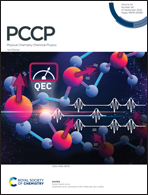Dynamically tunable bound states in the continuum supported by asymmetric Fabry–Pérot resonance
Abstract
The dynamic regulation of quasi-bound states in the continuum (quasi-BIC) is a research hotspot, such as incident angle, polarization angle, temperature, a medium refractive index, and medium position regulation. In this paper, a dual-band ultra-high absorber composed of upper asymmetric graphene strips and lower graphene nanoribbons can generate a symmetry-protected quasi-BIC and Fabry–Pérot resonance (FPR) mode. The band structure further demonstrates the symmetry-protected BIC. Research shows that the absorption system can withstand a relatively wide range of incidence and polarization angles. Interestingly, the quasi-BIC and FPR modes can be modulated by the Fermi levels of the graphene1 and graphene2, respectively, realizing a multifunctional switch with high modulation depth (MD > 94%), low insertion loss (IL < 0.23 dB), and large dephasing time (DT > 4.35 ps). This work provides a new approach for the dynamic regulation of quasi-BIC and stimulates the development of multifunctional switches in the absorber.

- This article is part of the themed collection: 2022 PCCP HOT Articles


 Please wait while we load your content...
Please wait while we load your content...